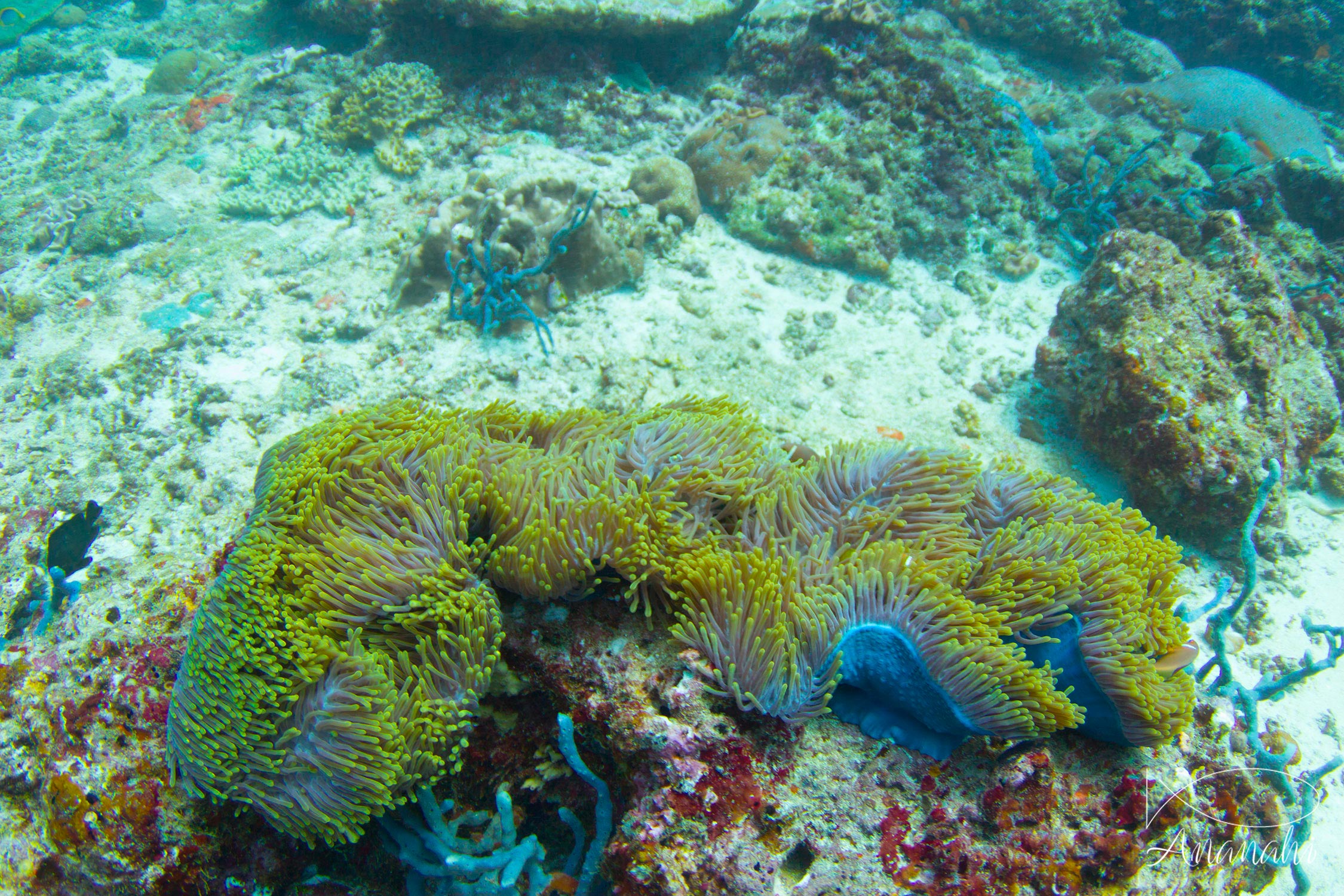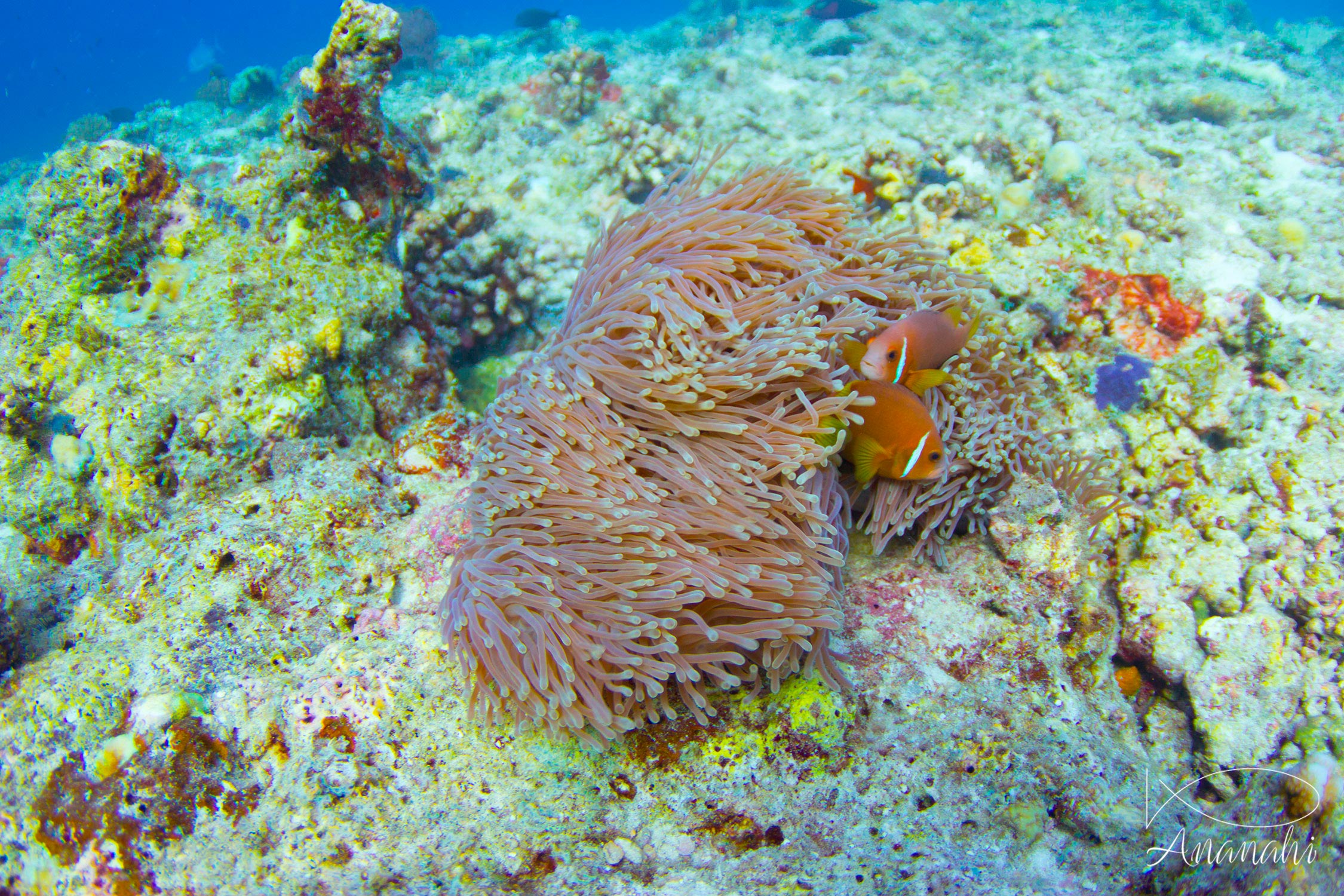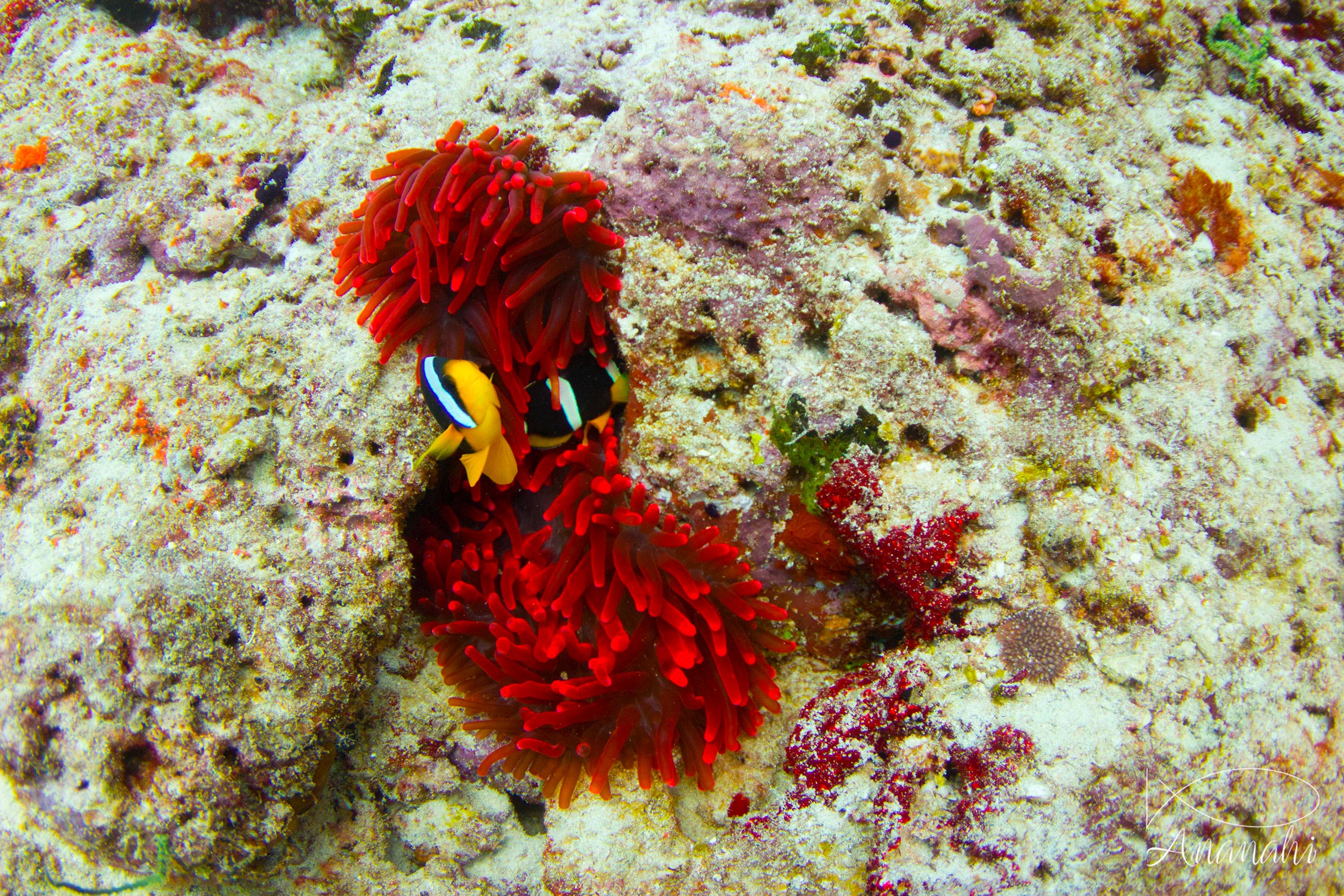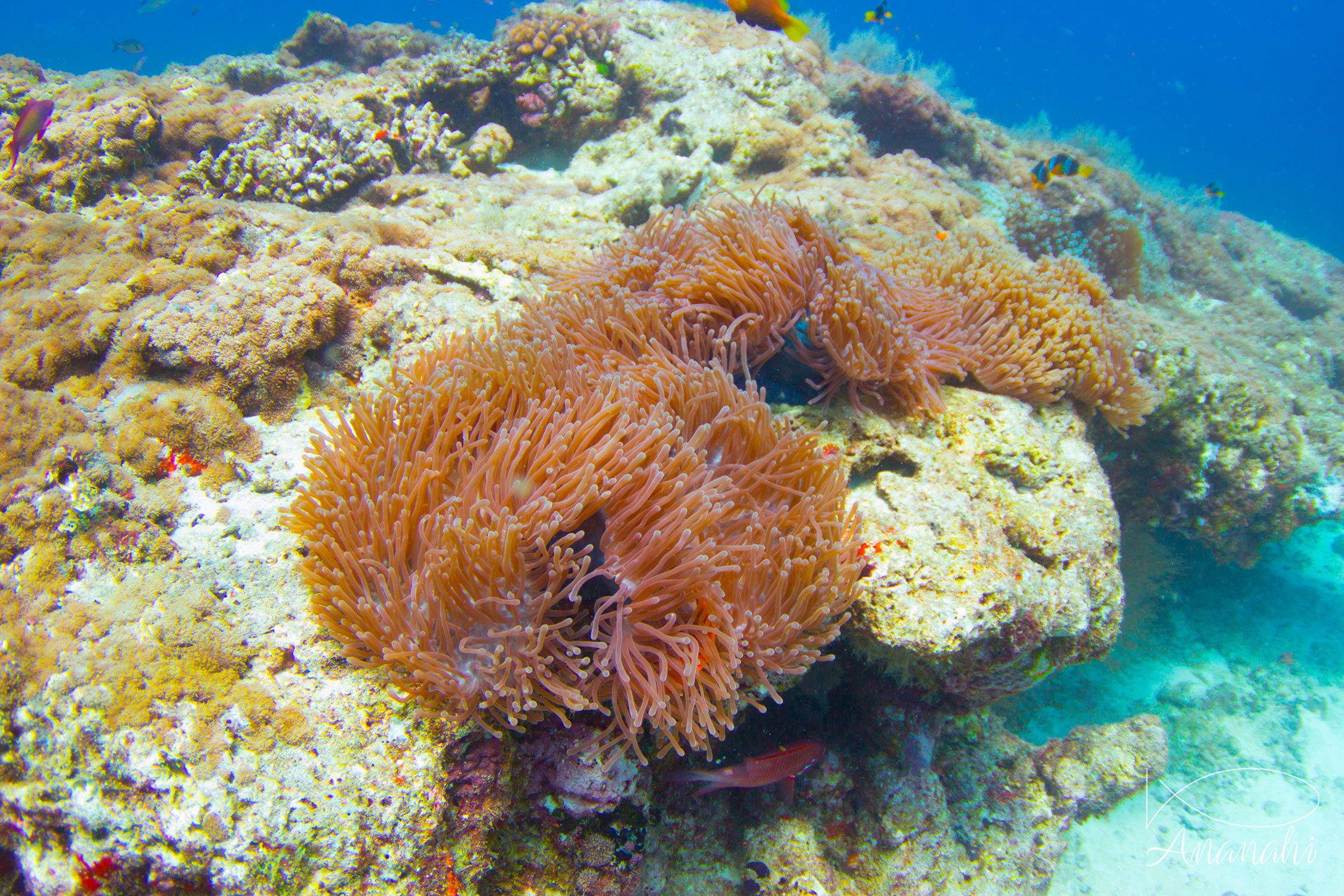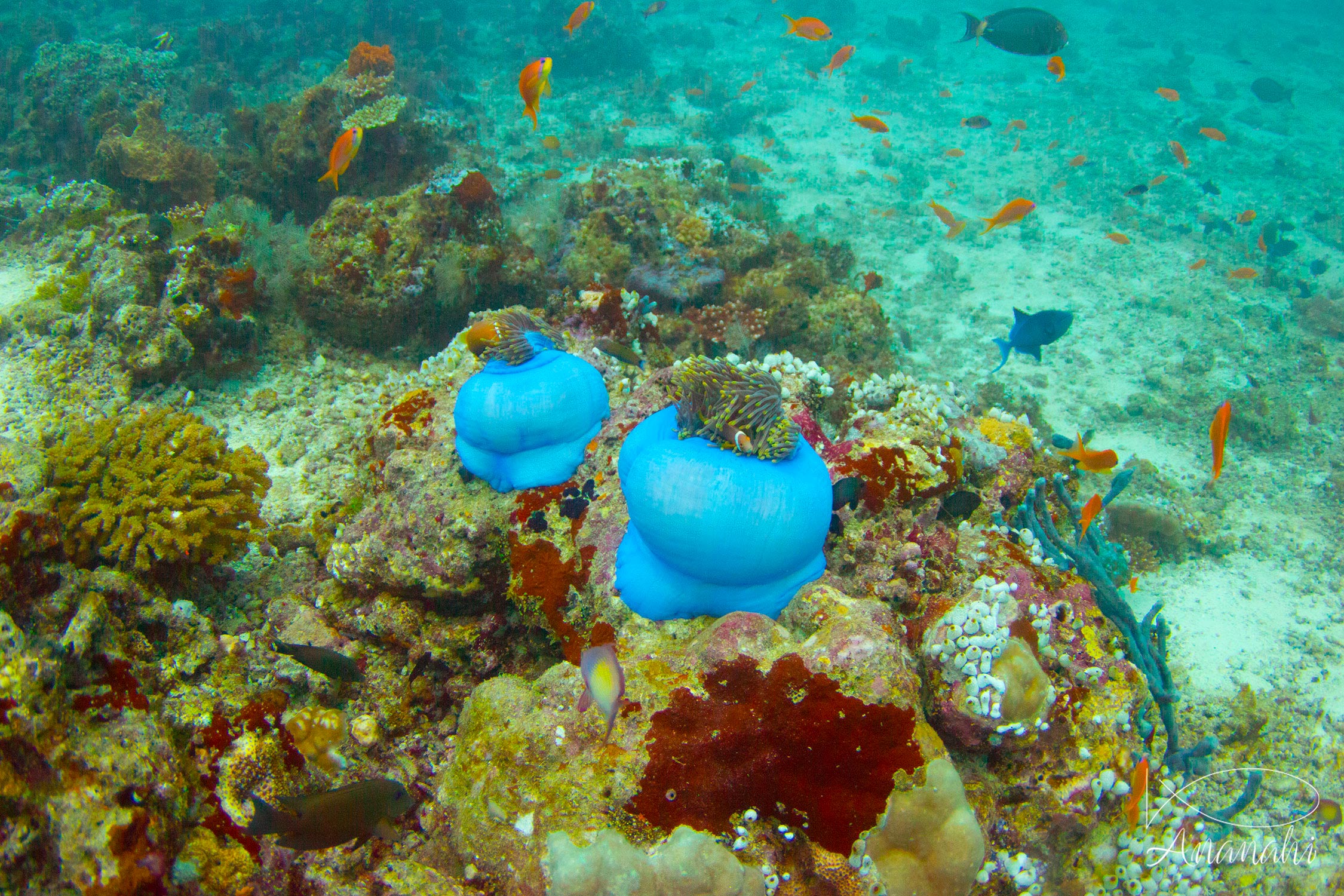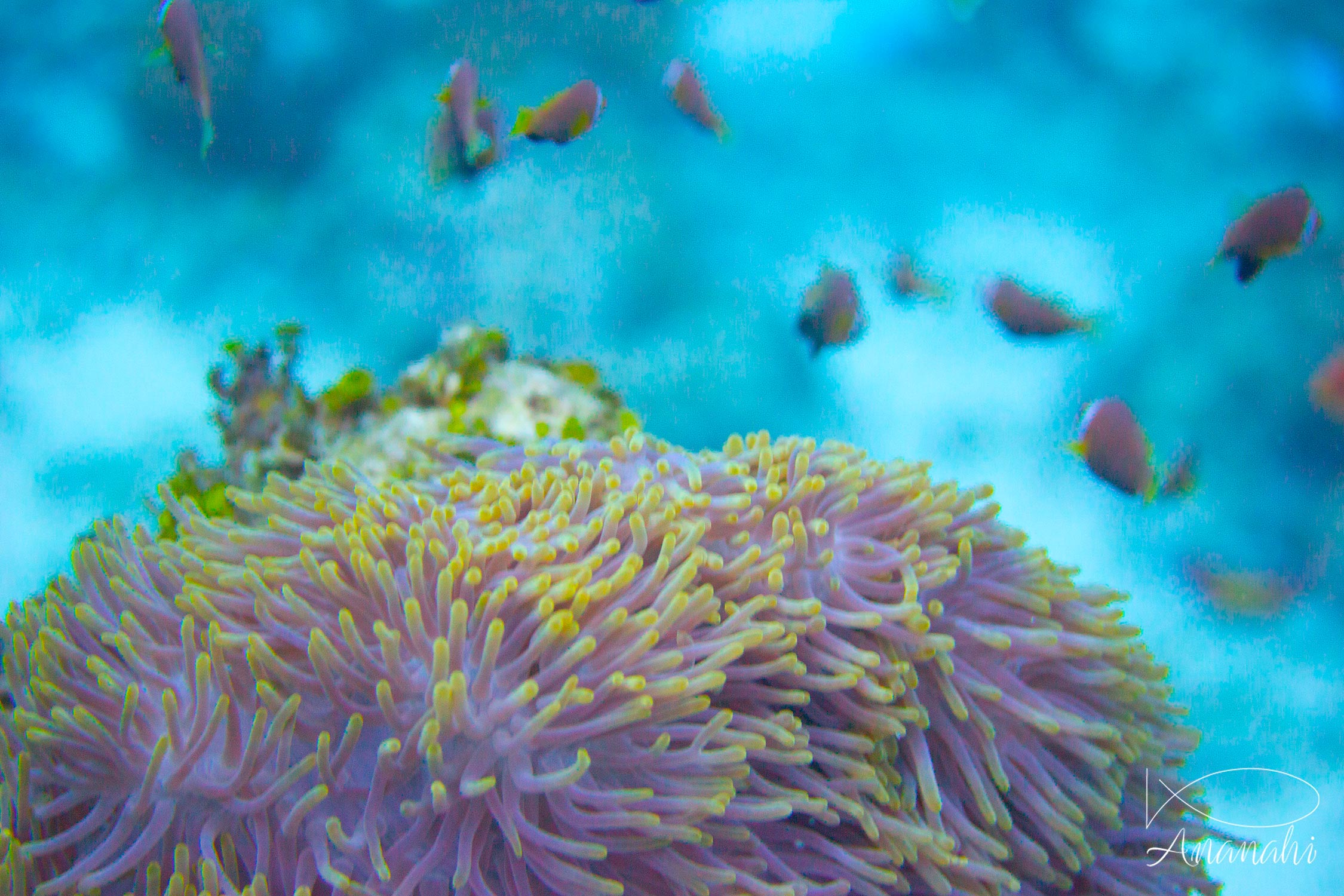
Scientific name: Heteractis magnifica
Size: 11.8 to 19.8 inches, up to 39.4 inches
Color: magenta, blue, green, white or brown
Distinguishing feature: Tentacles in the shape of fingers of 3.2 inches max, biotope very exposed to the current, can contract in "ball" mode
Where did we see it: Bali and Gili, Zanzibar, Thailand, French polynesia, Mayotte, Maldives, Raja Ampat
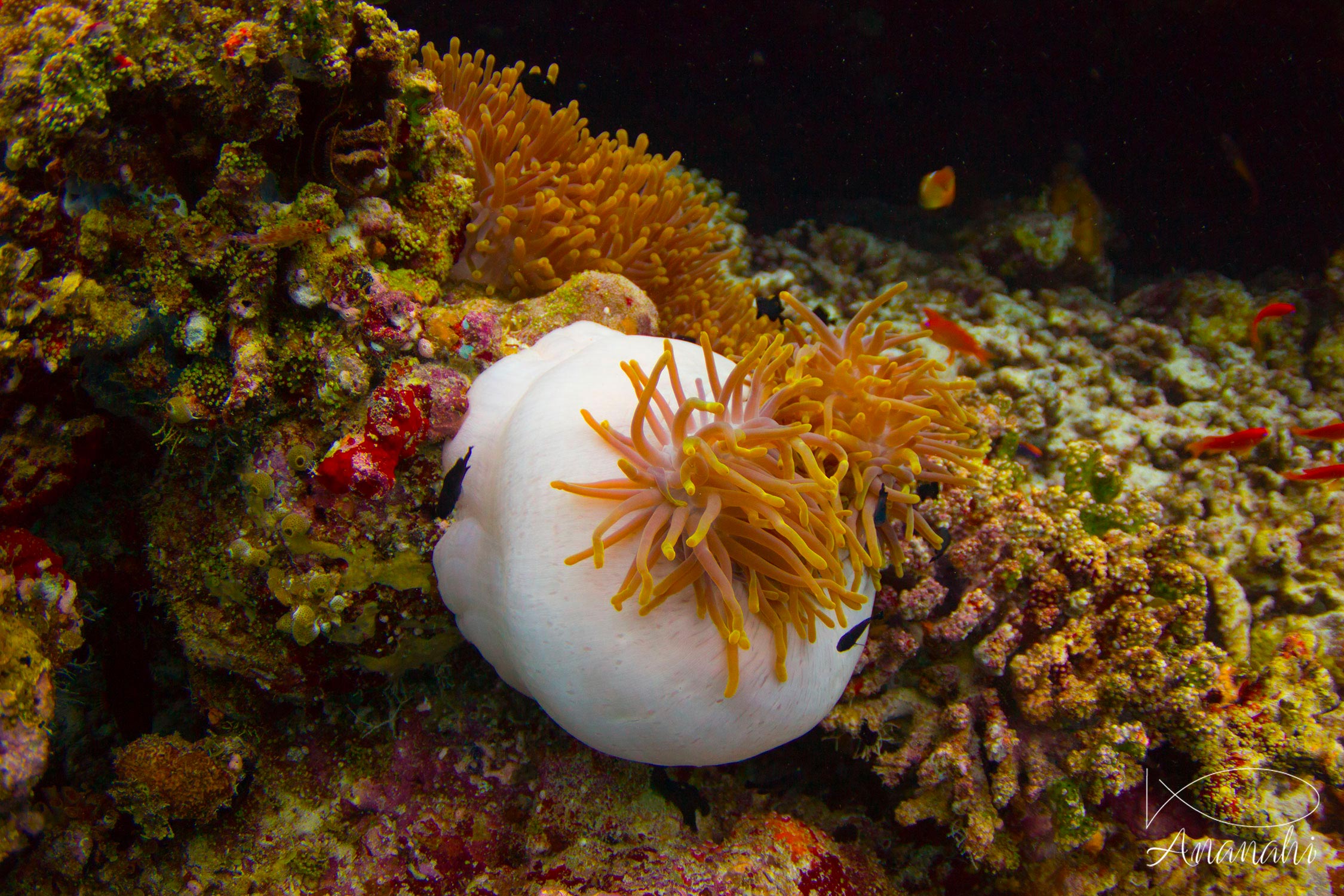
Scientific name: Heteractis magnifica
Size: 11.8 to 19.8 inches, up to 39.4 inches
Color: magenta, blue, green, white or brown
Distinguishing feature: Tentacles in the shape of fingers of 3.2 inches max, biotope very exposed to the current, can contract in "ball" mode
Where did we see it: Bali and Gili, Zanzibar, Thailand, French polynesia, Mayotte, Maldives, Raja Ampat
This anemone lives in symbiosis with seaweeds that provide a part of its food through their photosynthesis. Once installed, it will stop to move.
It is known to shelter until 12 different species of clownfish. They find their anemones to it smell.
There are places where this anemone is visible in large quantities, like a huge submarine field. It would be the basis of an individual who separated by scissiparity.
